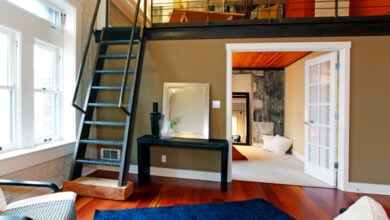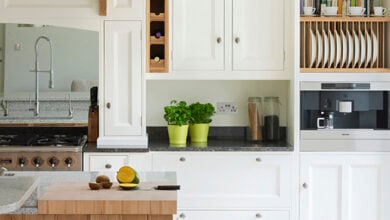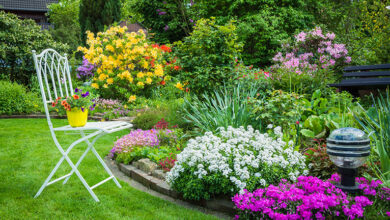Ensuite Bathroom Design Advice
The toilet has come a long way from its humble beginnings at the bottom of the garden. Over the last hundred years it has made the journey from the garden to the bedroom with a few stop offs along the way. Nowadays most modern properties are built with en suites in mind, while older properties’ bathrooms can be found: next to the kitchen (convenient for plumbing purposes but not much else); upstairs (the family bathroom); between two bedrooms (AKA the Jack and Jill style dual entrance bathroom); and finally in the bedroom itself (the en suite).
The concept of sharing a family bathroom has had its day, families no longer want communal facilities, and buyers want en suites. An en suite in the master-bedroom is often seen as a must have. Adding on is likely to add value to your property, the trick is to create space for one without sacrificing a room. The trouble with en suites is that they tend to be small, about 2.5 meter square, without much or any natural light so a well-thought through design is essential.
Ensuite bathroom design advice
Tricks to make your en suite appear bigger
Solid walls tend to make small ensuites appear claustrophobic, hence the trend for using glass to open up the space and let light in – and prying eyes. Aren’t us Brits mean to be prudes? It seems our bathroom habits are changing, gone are the days of chamber pots and open windows. But is a glass box much more civilised or private than an earthware potty under the bed? I’m not convinced.
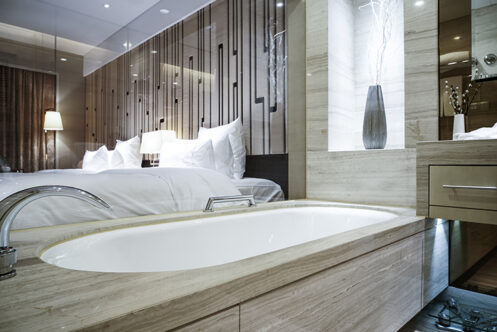
If light is the issue, recessed spot lights mirror the effect of natural light, which many ensuite bathroom designs lack. Remember that electrical work in the bathroom needs to be conducted by a Part P qualified electrician. If lighting isn’t enough reflective surfaces can help too: floors, mirrors and even window coverings can be a subtle way to bounce light around the room.
Whatever you do you want to make the space look as big as possible, choosing the right tiles can really help. Light coloured tiles make a space appear larger, but funnily enough so do very small tiles, such as mosaic. Avoid medium sized tiles and dark colours.
Another trick is to forget the shower tray. Instead tile the floor on a gradient for the water to drain away (wet-room style). By not breaking up the floor area with different surfaces the space will flow and appear larger.
Getting the layout right
En suites, especially small ones, aren’t easy home improvement projects. Sure, putting up a few tiles, even replacing a shower unit, aren’t the most difficult of jobs, but a bathroom doesn’t just have to look good, it needs to be functional and practical. This is where designing the layout and choosing the right suite are so important.
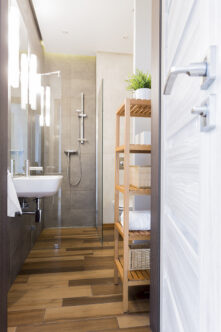
Whatever your dreams, be it a corner jacuzzi bath or walk-in walk-out shower, it’s important to design a bathroom that works well within the space available. Ideally if you’re creating a new en suite you will want to find a solution that doesn’t sacrifice a bedroom – which could have a negative impact on the price of your property. This long skinny bathroom works because it’s designed with the space in mind, using it as a feature rather than a compromise. The best solutions aren’t usually the obvious or conventional ones, this is where a bathroom specialist’s skills can be helpful.
The walk-in walk-out shower is the new wet-room, it looks great and easy to clean, but forget privacy.
Things to consider
It’s important to check that you can access your water supply and drainage easily, backing an en suite onto another bathroom makes access easier and the project cheaper. Ask yourself if your boiler is up to the job. With more bathrooms in the house you might want to think about installing a combi boiler, rather than a cylinder. That extra little bit more space created by removing your hot water cylinder could make a huge difference to the layout of your ensuite bathroom design!

At the same time consider where pipe work and electrics will be. The last thing you want in a small space is lots of visible pipe work, but remember by boxing this in you will loose precious inches in the room.
If you’re upgrading an existing en suite you can save money by not changing the layout, keeping the plumbing the same makes it a far simpler job.
Don’t forget about ventilation and insulation! It’s essential to make sure there is plenty of ventilation and fresh air circulating, this will prevent mould and keep the room feeling comfortable. You can also insulate exterior walls to keep the room warm – there’s nothing worse than stepping out of the shower into a cold damp room in the winter months!
This is a great ventilation solution, indoors vs outdoors, you choose.

An en suite is a small space that is perfect for a creative outburst. Unlike the living room this is where outrageous colours and quirky materials can be used in abundance. Get those creative juices going. This is a small space where you really should go big or go home!
Need help with your ensuite bathroom design or refurbishment? Get quotes from our bathroom specialists when you post a job on Rated People.
